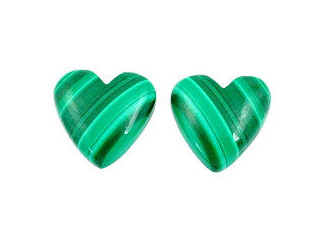HOW YOUR TOOTHBRUSH BECAME A PART OF THE PLASTIC CRISIS
3 years ago Fashion Sacramento 1K views Reference: 39564Location: Sacramento
Price: Contact us
Toothbrush design is little changed from its earliest form. The biggest difference is in the materials: toothbrushes are now all made of at least some plastic. Take a tour of the humble toothbrush and find out how it affects the environment.
At first, years ago, it was just an occasional piece of plastic trash that Kahi Pacarro, the founder of Sustainable Coastlines Hawaii, picked up on the beach cleanups he organized around the state. A straw here, a takeout container there. But one day Pacarro spotted something particularly surprising in the beach detritus: a toothbrush.
Now, in any given Hawaii beach cleanup, he says, it’s not uncommon to pick up 20 or even 100 toothbrushes.
The reason is simple. The total number of Plastic Toothbrushes being produced, used, and thrown away each year has grown steadily since the first one was made in the 1930s.
“I like to ask people, what’s the first thing you touch in the morning? It’s probably your toothbrush,” says Pacarro. “Do you want the first thing you touch every day to be plastic?”
For centuries, the basic toothbrush was made from natural materials. But during the early 20th century, the giddy early days of plastic innovation, manufacturers started substituting nylon and other plastics into the design—and never looked back.
Plastic has so fully infiltrated toothbrush design that it’s nearly impossible to clean our teeth without touching a polymer. And because plastic is essentially indestructible, that means nearly every single toothbrush made since the 1930s is still out there in the world somewhere, living on as a piece of trash.
Now, some designers are looking for ways to reimagine this crucial, classic object in a way that puts less stress on the planet. But to find solutions to the toothbrush conundrum, we have to understand how we got here.
The best invention of all time?
It turns out people really love having clean teeth. In MIT’s 2003 Lemelson Innovation Index survey, the Electric Toothbrush rated higher than cars, personal computers, or cellphones as the innovation respondents couldn’t live without.
A plastic-free future?
“It’s quite remarkable, actually, that the design [of the toothbrush] has stayed so similar throughout the years,” says Charlotte Fiell, a design historian from the U.K. “Basically, the function hasn’t changed, has it?”
But now designers are beginning to ask: Can we remake this essential object using little or no plastic?
The American Dental Association suggests that everyone replace their toothbrushes every three or four months. At that rate, brushers in the U.S. alone would go through over one billion toothbrushes each year. And if everyone around the world followed those recommendations, about 23 billion toothbrushes would get trashed annually. Most are traditional Bamboo Toothbrushes, but some 55 million U.S. brushers use electric toothbrushes each year, so some number of those plastic-handled, battery-containing objects also end up in the waste stream each year.
Many toothbrushes are unrecyclable because the composite plastics most are now made of are difficult, if not impossible, to break apart efficiently.
In response, some companies have pivoted back to natural material, like wood or boar bristles. Bamboo handles can solve part of the problem, but most of the bamboo brushes on the market still have nylon bristles, so at least that part of the brush has to be thrown away.
Other Special Toothbrushes, like the Radius, pack more, sturdier bristles into their heads. That helps them last longer so they need to be replaced less often—only two brushes a year instead of four.
Some companies have gone back to a design that was originally introduced nearly a century ago: toothbrushes with removable heads. Goodwell, in Portland, Oregon, produces metal handles it hopes brushers will keep for years. The head pops out when the bristles wear down, and a new one snaps in, reducing the total amount of waste to less than 30 percent of a normal brush, says Patrick Triato, one of the company’s founders.
Maintaining good Oral Care is essential to maintaining good overall health. The goal of proper oral hygiene is to remove or prevent formation and buildup of plaque and tartar, to prevent dental caries and periodontal disease, and to decrease the incidence of halitosis.
Results of patient surveys clearly demonstrate that many are unaware of the importance of practicing good oral hygiene and its connection to overall health. For example, results from a May 2012 survey conducted by the American Dental Association regarding oral health found that many people are not certain of basic information regarding proper dental care, recommended replacement time frame for toothbrushes, and causes of dental caries.1 In addition, new findings from the Centers for Disease Control and Prevention (CDC) show that approximately 50% of people 30 years and older have some degree of periodontal disease.2,3 Routine oral health is important, but only an estimated 44.5% of people obtain professional dental care on a regular basis.4,5 Clinical studies have shown that those with poor oral hygiene are at increased risk of developing various oral health problems. Poor oral hygiene is directly responsible for increased incidence of dental caries, periodontal disease, halitosis, oral pain, and discomfort for denture wearers.4 In addition, some clinical studies have indicated a link between some oral cancers and poor dental and oral hygiene.



